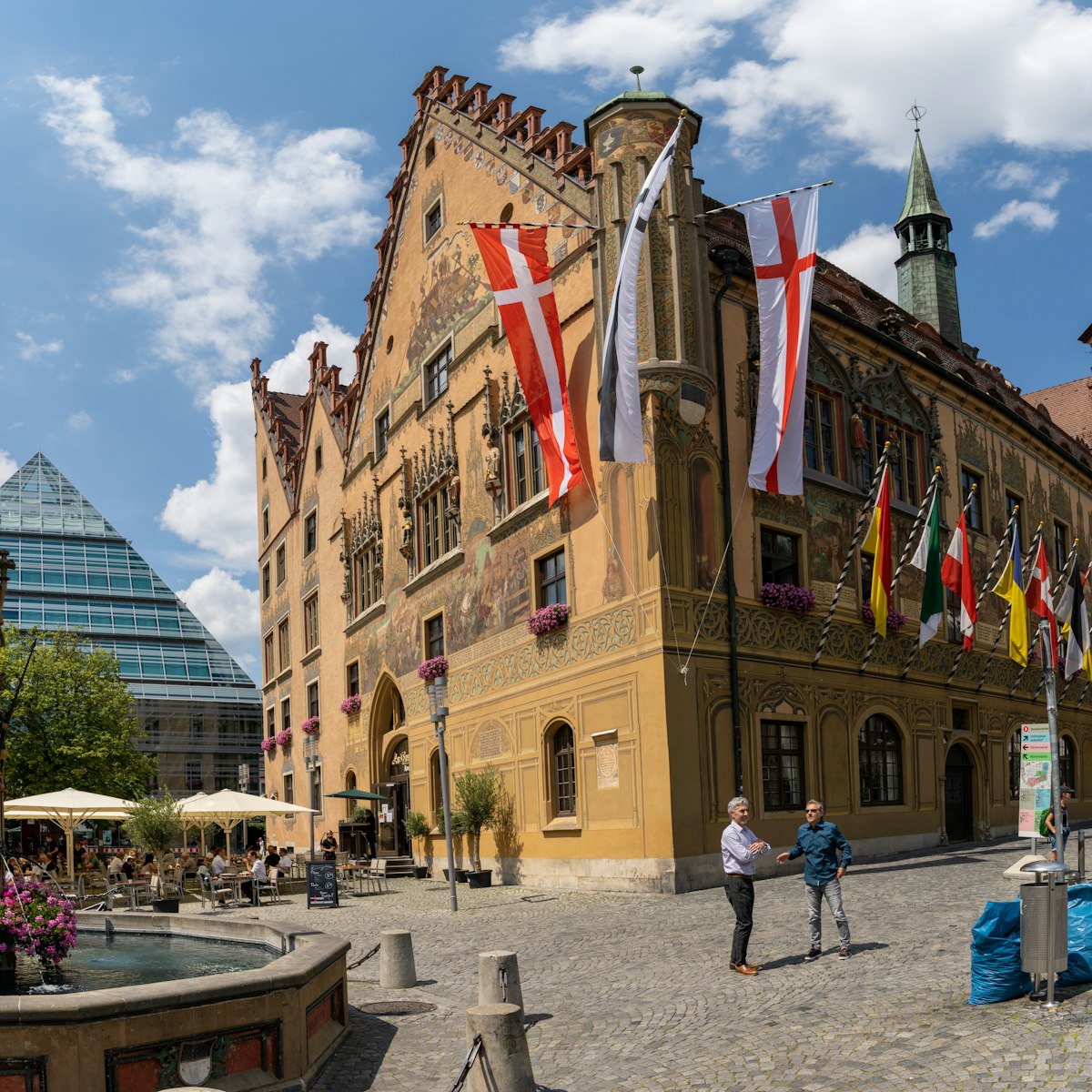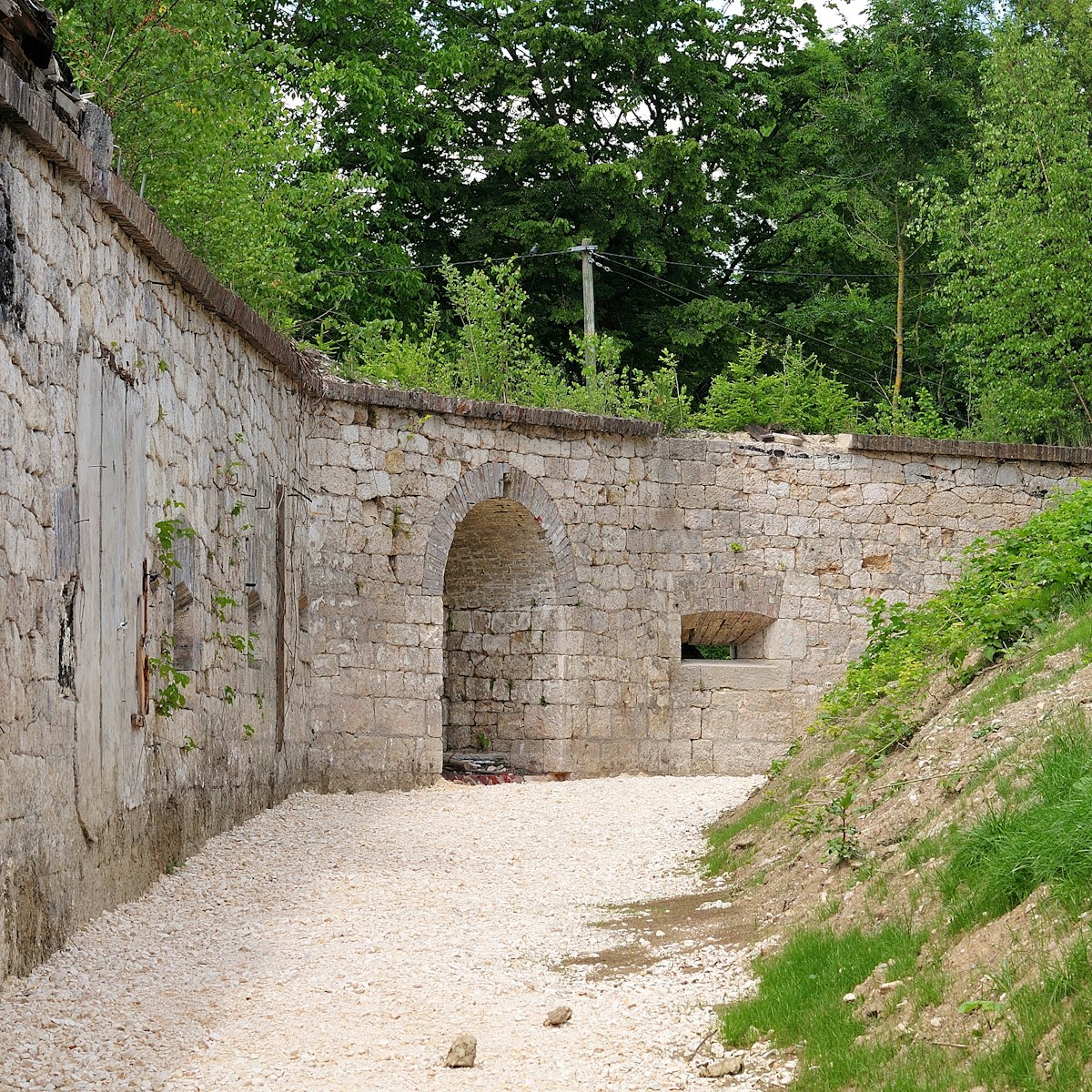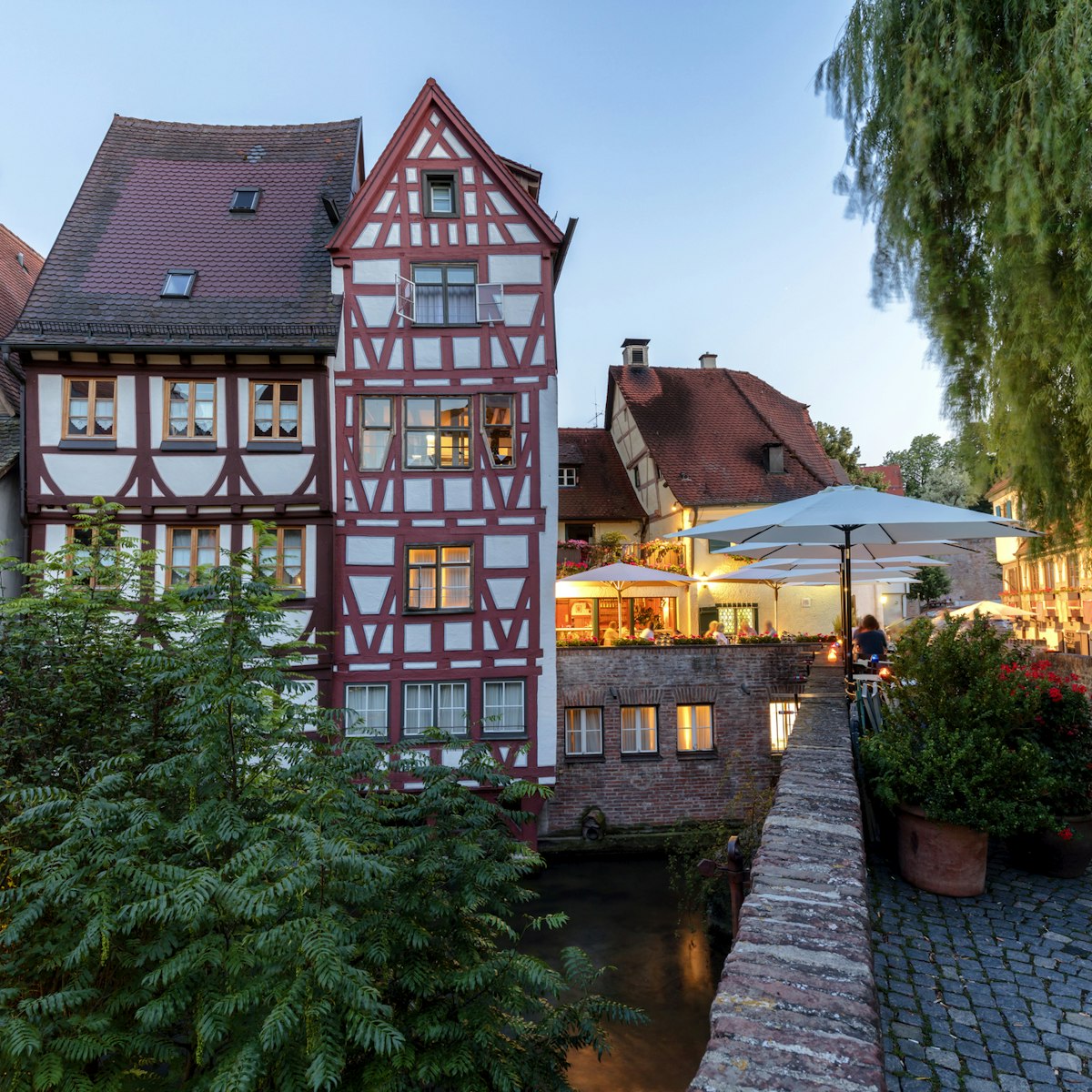
Ulm
'Ooh, it’s so big'… First-time visitors gush as they strain their neck muscles gazing up to the Münster. It is. And rather beautiful. Celebrated for its…

Ulm
'Ooh, it’s so big'… First-time visitors gush as they strain their neck muscles gazing up to the Münster. It is. And rather beautiful. Celebrated for its…

Swabian Alps Region
On its perch above Tübingen, this turreted 16th-century castle has a terrace overlooking the Neckar River, the Altstadt’s triangular rooftops and the vine…

Swabian Alps Region
Housed in Tübingen's hilltop castle, this fascinating archaeology museum houses the 40,000-year-old Vogelherd figurines – the world’s oldest figurative…

Swabian Alps Region
The brainchild of industrialist Reinhold Würth, this contemporary gallery is housed in a striking limestone building that preserves part of a century-old…

Ulm
Lording it over the Marktplatz, the 14th-century Rathaus sports a step-gabled, lavishly frescoed Renaissance facade. Out front is the Fischkastenbrunnen,…

Ulm
South of the Fischerviertel, along the Danube’s north bank, runs the red-brick Stadtmauer (city wall), the height of which was reduced in the 19th century…

Ulm
The charming Fischerviertel, Ulm’s old fishers’ and tanners’ quarter, is slightly southwest of the centre. Beautifully restored half-timbered houses…

Swabian Alps Region
Rising dramatically from an exposed crag, with its medieval battlements and riot of towers and silver turrets often veiled in mist, Burg Hohenzollern is…

Swabian Alps Region
Founded in 1183 by Rudolph I, Count Palatine of Tübingen, Kloster Bebenhausen is one of southern Germany's finest medieval Cistercian monasteries…

Naturpark Schönbuch Nature Reserve
Swabian Alps Region
For back-to-nature hiking and cycling, make for this 156-sq-km, lushly forested nature reserve. It's interwoven with 560km of marked trails. With a bit of…

Ulm
This museum is a fascinating romp through ancient and modern art, history and archaeology. Standouts include the 20th-century Kurt Fried Collection,…

Swabian Alps Region
Half-timbered townhouses frame the Altstadt’s main plaza Am Markt, a much-loved student hang-out. Rising above it is the 15th-century Rathaus (town hall),…

Swabian Alps Region
On Am Markt square, your gaze is drawn to the ornate Rathaus and to the terracotta-hued Widmanhaus at No 4, a remnant of a 13th-century Franciscan…

Ulm
A nod to Ulm’s most famous son, this fiendishly funny bronze fountain by Jürgen Goertz shows a wild-haired, tongue-poking-out Albert Einstein, who was…

Ulm
With origins dating back to the early 14th century, the Zeughaus is one of Ulm's most impressive historical buildings. It underwent significant expansion…

Swabian Alps Region
The Cottahaus is the one-time home of Johann Friedrich Cotta, who first published the works of Schiller and Goethe. A bit of a lad, Goethe conducted…

Ulm
Designed by Richard Meier, the contemporary aesthetic of the concrete-and-glass Stadthaus is a dramatic contrast to the Münster. The American architect…

Swabian Alps Region
Rising high above the Neckar Valley, lonely Burg Guttenberg is one of the most dramatic castles in the Swabian Alps and a fine example of an intact 14th…

Swabian Alps Region
Steps lead down from Eberhardsbrücke bridge to Platanenallee, a leafy islet on the Neckar River canopied by sycamore trees. From here, there are views up…

Ulm
Fitting neatly into Ulm's ensemble of eye-catching contemporary architecture, this free-standing synagogue was built for the Jewish community and…

Swabian Alps Region
Towering above Pfarrgasse is the steep-roofed, 16th-century Neubau, built as an arsenal and granary and now used as a theatre. Ascend the stone staircase…

Swabian Alps Region
You can see how the dreamy Neckar views from this silver-turreted tower fired the imagination of Romantic poet Friedrich Hölderlin, resident here from…

Swabian Alps Region
The streamlined Kunsthalle stages first-rate exhibitions of mostly contemporary art; in recent times, everything from Post-Minimalist art to…

Ulm
How grain grows, what makes a good dough and other bread-related mysteries are unravelled at the Museum of Bread Culture. The collection celebrates bread…

Ulm
The 14th-century Rathaus has an ornately painted Renaissance facade and a gilded astrological clock (1520); bells count off every quarter-hour. Inside you…

Ulm
On the third Monday of July, the mayor swears allegiance to the town’s 1397 constitution from the 1st-floor loggia of the early 17th-century baroque…

Swabian Alps Region
One place you can be guaranteed of seeing a black-spotted pig is this open-air farming museum, a sure-fire hit with the kids with its traditional…

Swabian Alps Region
This well-curated museum traces Schwäbisch Hall’s history with a collection of shooting targets, Roman figurines and rarities including an exquisite hand…

Ulm
The glass-fronted Kunsthalle Weishaupt contains the private collection of Siegfried Weishaupt, which is presented in rotating exhibitions. The accent is…

Swabian Alps Region
Green-fingered students tend to the Himalayan cedars, swamp cypresses and rhododendrons in the gardens and hothouses of the serene Botanischer Garten, 2…

Swabian Alps Region
Drawing the gaze high above Am Markt, Tübingen's 15th-century Rathaus sports a riotous, exuberantly frescoed baroque facade and an astronomical clock.

Ulm
This 36m-high glass pyramid is the city’s main library. Designed by Gottfried Böhm, it's most impressive illuminated after dark.

Swabian Alps Region
Steps lead spectacularly up to the late-Gothic Kirche St Michael, which was built in place of the original three-aisled basilica.

Swabian Alps Region
The late-Gothic Stiftskirche shelters the tombs of the Württemberg dukes and some dazzling late-medieval stained-glass windows.

Ulm
This bronze plaque marks where Albrecht Berblinger, a tailor who invented a flying machine, attempted to fly over the Danube in 1811. The so-called …

Ulm
In the Marktplatz is the Fischkastenbrunnen, a fountain where fishmongers kept their river fish alive on market days.

Ulm
On Bahnhofstrasse sits Max Bill’s memorial (1979) to the great physicist – a stack of red-granite pillars marking the spot where Einstein was born.

Swabian Alps Region
Statues of four women representing the seasons grace the Neptunbrunnen, the centrepiece of Am Markt square.

Ulm
Part of Ulm's original medieval fortifications, the 36m-high, colourful tile-roofed Metzgerturm does a Tower of Pisa by leaning 2.05m off-centre.

Swabian Alps Region
The Gotischer Fischbrunnen (1509) is a large iron tub once used for storing fish before sale.